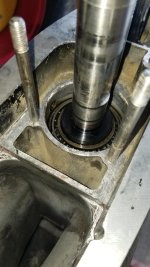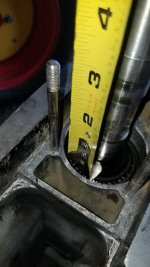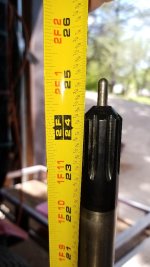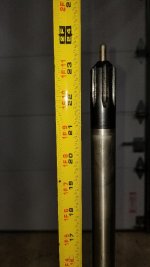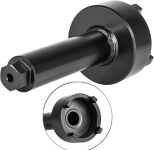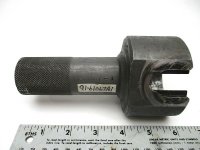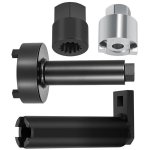I have a ~1980 Mercury 175HP V6 with the lower currently removed, (but lower unit is still assembled). Last year the prop caught a submerged limb and it broke a section of the cavitation plate off. I am trying to determine the drive shaft length so I can purchase a spare lower unit while my OEM unit is repaired. But I am not sure where to take the shaft measurements from to match the dimensions provided by sellers. I currently have the water pump assembly completely removed, including the base.
I am getting a measurement of ~25" from the driveshaft stop collar above the case upper bearing to the tip of the drive shaft, (with a half inch of that being what appears to be an alignment pin, see pics).
Is this the proper way to measure the drive shaft with the lower unit still assembled?
Thanks!
I am getting a measurement of ~25" from the driveshaft stop collar above the case upper bearing to the tip of the drive shaft, (with a half inch of that being what appears to be an alignment pin, see pics).
Is this the proper way to measure the drive shaft with the lower unit still assembled?
Thanks!


